Very few of us need the same clubs as the pros on TV are using. In fact, you’d get some terrible results if you grabbed one of their drivers.
Average golfers like us need a little help with our game. With that in mind, my pick for the best driver for average golfers is the Callaway Paradym.
If you want more details and to see the full breakdown…keep reading.
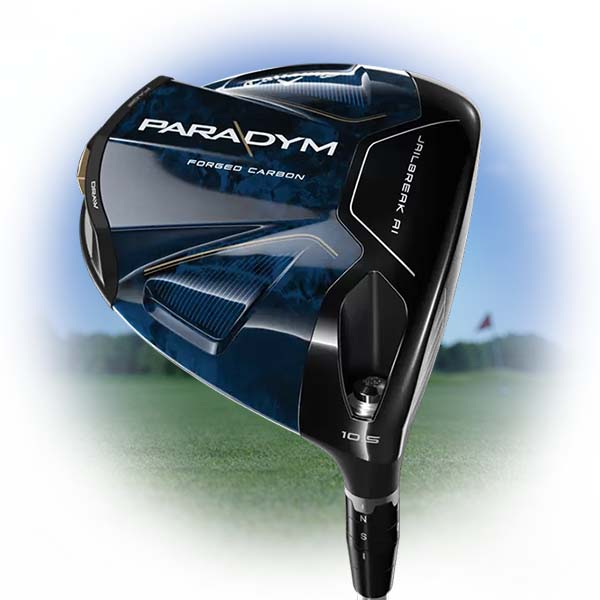
1. Callaway Paradym
You don’t get the title of “Top Pick” by accident. Whether it’s accuracy or distance holding you back, a Paradym will tip the scales.
There are three Callaway Paradym models, the one highlighted here, the Paradym X, and the Paradym Triple Diamond.
The reason we highlighted this version is that it’s for all golfers. Whether you’re a beginner, mid-handicapper, or someone on the fringe of breaking 80, this club plays and helps you improve.
Callaway Paradym Specs
- Lofts: 9°, 10.5°, 12° (Adjustable -1°, +1°, 0° and +2°)
- Lie: 57° (adjustable from -1° to +2°)
- Head Size: 460cc
- Swing Weight: D3
- Adjustable Hosel: Yes
- Adjustable Weights: Yes (15g Sliding Weight)
- Stock Shafts:
- Aldila Ascent PL Blue 40 Graphite
- Project X HZRDUS Gen 4 Silver 50 Graphite
- Project X HZRDUS Gen 4 Silver 60 Graphite
- Project X HZRDUS Gen 4 Black 60 Graphite
- Fujikura Ventus TR Blue 6 Graphite
Launching the ball comes naturally and your shot shape will stay close to straight due to its low-spin engineering. It won’t be easy to shape the ball with purpose but can be done. In other words, go over the trees instead of trying to wrap around them on a dogleg.
Older golfers will remember that shots off the toe lead to a hook and contact on the heel means a slice. With the Paradym, those effects are reduced and there’s less of a distance punishment.
Pros
- An easy 5-10 yards added regardless of what driver you switch from based on materials and engineering.
- A driver you can grow with, which makes it a great option for improving players.
Cons
- Price hurts. Performance won’t.
What really separates this from the competition though, is the carbon chassis. This innovation reduces total weight and shoots the ball off your club like a pinball.
Bring the club to the range or out on the first tee. Hit a few with this, and then hit a few with your old driver. The improvement will be obvious.
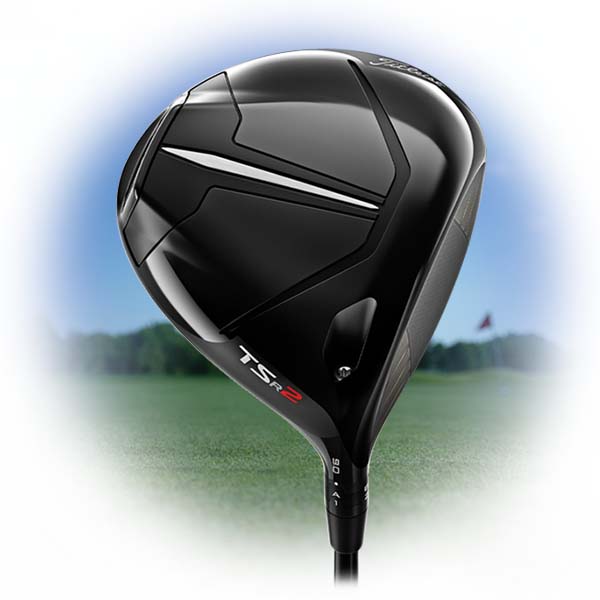
2. Titleist TSR2
Straighter shots on your outside misses. Longer distance when you hit it square. Keep the club face square and you’ll find the fairway.
I like looking down over a drive and seeing simple. For the most part, I’m worried about 17 other things, which as we all know if hardly a recipe for success. So the way I look at it, a sleek and classic Titleist look inspires some confidence. Or at least as much confidence as moving all your tees from one pocket to the other would (shoutout to Roy McAvoy and Tin Cup.)
Titleist TSR2 Specs
- Lofts: 8°, 9°, 10°, 11° (same for left-handed)
- Lie: 58.5° (adjustable from -.75° to +1.5°)
- Head Size: 460cc
- Adjustable Hosel: Yes
- Adjustable Weights: No
- Stock Shafts:
- HZRDUS RED CB 50g, 60g
- HZRDUS Black 4G 60g, 70g, 80g
- Mitsubishi Tensei AV Blue 55g, 65g, 75g
- Mitsubishi Tensei 1K Black 65g, 75g, 85g
As far as tangible benefits, there is stability across the entire clubface. You’ll benefit from hitting the ball at center, but you won’t suffer when you’re just a bit off the mark. It’s a win-win.
As to why that happens, it’s part of a multi-plateau variable face thickness build. This design creates stability and protects you from suffering off the tee, even when your typically average round is turning into never-played-this-bad-in-your-life territory.
Pros
- High launch is as effective for those with slow swing speeds as it is for fast swing speeds.
- The most forgiving of all the drivers in the TSR line.
Cons
- Price point, like the Paradym, will keep it out of the bag for many.
It’s one of the best drivers for average golfers because it’s protective. You can adjust it to fit how you’re playing at the moment. Gone are the days of adapting to your club. The Titleist TSR2 adapts to you.
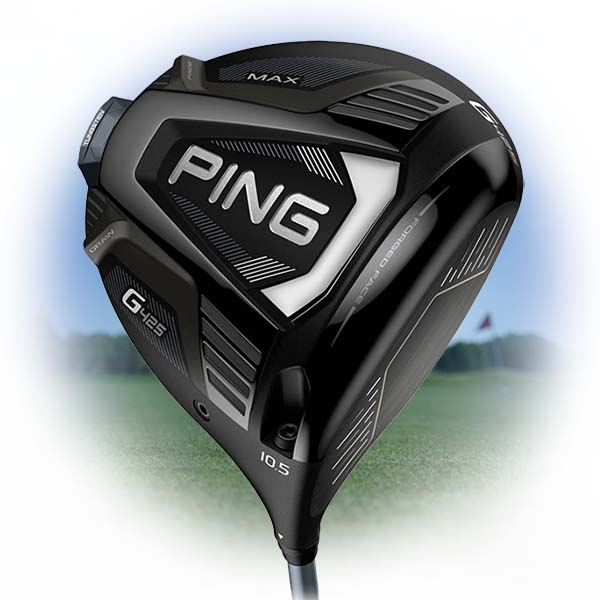
3. Ping G425 Max
Top-tier performance with a price tag that’s closer to comfortable. Keep your swing simple and you’ll find yourself in position A off the tee with regularity.
Here’s the thing, I like to see what I’m paying for. When it comes to golf, it’s usually seeing results (your ball sitting in short grass.) But in some cases, seeing the tech that drives your clubs’ price tag up is pretty nice too. The Ping G425 hits on both criteria. You see results, you see advanced tech when you line up over the ball.
Ping G425 Max Specs
- Lofts: 9°, 10.5°, 12° (same for left-handed)
- Lie: 58.5° (adjustable from -1° to +2°)
- Head Size: 460cc
- Swing Weight: D3
- Adjustable Hosel: Yes (-1.5° to +1.5° loft)
- Adjustable Weights: Yes
- Stock Shafts:
- PING Alta CB 55 Slate (graphite)
- PING Tour 65 (graphite)
- Aldila Rogue White 130 MSI 70 (graphite)
- Mitsubishi Tensei AV Orange 55, 65 (graphite)
- PING Alta Distanza (graphite)
Looking over the crown of the club, you’ll see the internal dragonfly structure. This is Ping’s method of lowering the overall weight while redistributing some to the back of the head. The seemingly simple design helps increase swing speed and the redistributed weight helps launch the ball. Distance and ball flight improvements—what else can you ask for? Self-correcting drives?
Pros
- Adjustments are simple and easy to make. Set it to fade, neutral, or draw in seconds.
- A con for some, a pro for most. The sound feedback will let the course know when you hit it on the screws.
Cons
- Matte finish could wear off over time. An aesthetic issue but could bother some people.
Alright, maybe not self-correcting, but Ping does a great job here optimizing forgiveness through adjustability. Between the hosel and movable weights, making minor adjustments to the club helps make up for small deficiencies in your game.
Let’s throw in another x-factor—price. The Ping G425 is our budget pick among the best drivers for average golfers because even though it’s an older model (which lowers the price) performance is still a cut above the rest.
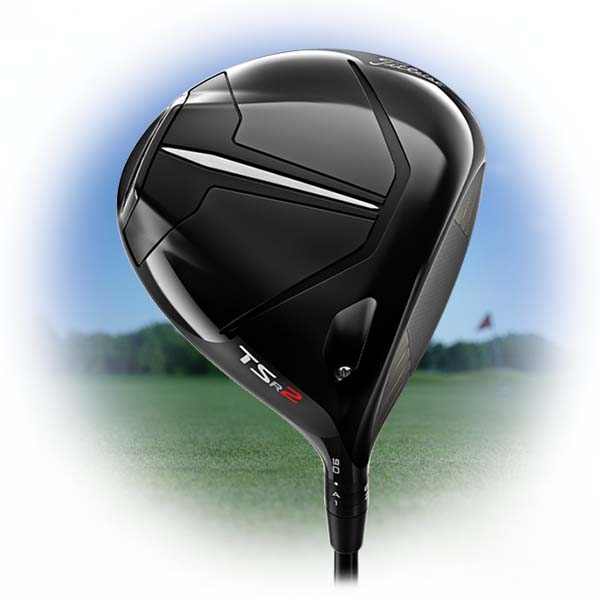
4. Titleist TSi1
A boost for swing speed. A boost for ball speed. Both of these come easily with the Titleist TSi1 and lead to longer drives.
There are two things you need to do when battling slow swing speeds. Switch to a senior flex shaft and put a driver in your bag designed for the average golfer who needs to add a little speed to their swing. A premier option? The Titleist TSi 1.
Titleist tsI 1 Specs
- Lofts: 9°, 10°, 12° (10° only for left-handed)
- Lie: 58.5°
- Head Size: 460cc
- Adjustable Hosel: Yes
- Adjustable Weights: No
- Stock Shafts:
- Aldila Ascent UL 41g, 44g, 47g, 48g
Each feature of this club shaves away a few grams from other high-performance clubs, making it immediately evident for anyone making the switch. You’ll add swing speed without trying.
Even better, there is a big emphasis on corrective measures for toe and heel hits. Take your hardest swing. Poor contact isn’t as punitive as it might be with a club designed for the low-handicap faction of golfers. The sweet spot won’t be as rewarding, but getting in trouble isn’t an issue.
Pros
- High performance club packed in a simple profile—increased swing speed is an automatic.
- No lower loft options takes away the urge to go with something that’s too low.
Cons
- Limited loft selection for left-handed players.
The simplicity of this club cannot be overstated. The TSi 1 has a simple crown design and clean look altogether. When you’re focused on increasing or retaining speed levels, that’s all you should be focusing on. Too many things are never a good thing, and Titleist eliminates a lot of that with their classic design here.
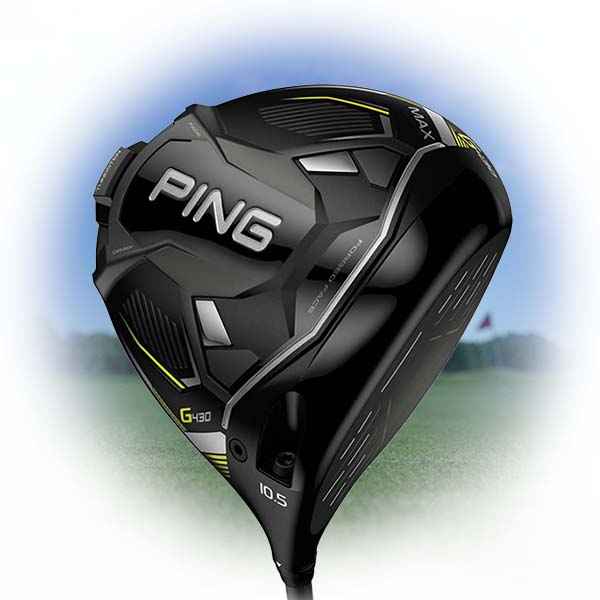
5. Ping G430 Max
We’ll never tell you to slow your swing down, we’ll just tell you to learn how to control it. The Ping G430 Max will help you stay in the short grass while you figure it out.
Being a low handicapper with average skills means one thing. You’re really good at avoiding big mistakes—the doubles, the triples, etc.
All of this starts by reducing your margin of error off the tee and putting yourself in places to succeed. It starts by getting rid of the OB drives, tee shots into grass a foot high, and clearing water you weren’t so sure about.
Ping G430 Max Specs
- Lofts: 9°, 10.5°, 12°
- Lie: 58.5° (adjustable from -1° to +2°)
- Head Size: 460cc
- Swing Weight: D3
- Adjustable Hosel: Yes (-1.5° to +1.5° loft)
- Adjustable Weights: Yes (25g rear movable)
- Stock Shafts:
- PING Alta CB Black 55 (56g, 57g, 60g)
- PING Tour 2.0 Chrome 65 (56g, 61g, 66g)
- PING Tour 2.0 Black 65 (60g, 66g)
- Mitsubishi Kai’Li White 60 (65g, 66g)
- HZRDUS Smoke Red RDX 50 (50g, 51g)
- HZRDUS Smoke Red RDX 60 (60g, 61g)
The clubface tells the story with the G430. It’s not one piece, it’s not one thickness, it’s not flat. The optimized T9S+ forged face is built with purpose, where certain parts of the face are thicker than others to generate maximum ball speed. Going even further, the face has a variable roll radius that reduces spin and the ill-effects of poor contact.
Pros
- Ball speed makes things happen. The G430 delivers here, even among the lead line of all top brands.
- One of the best sounding drivers—can’t overlook the simple stuff.
Cons
- Not an ideal option for people who miss off the bottom of the club consistently. This miss produces high swing speeds but will leave you with low ball flight.
The face speeds things up to get distance and drops spin to low levels to keep you in the fairway. As a low handicapper, you have a lot of swing speed, but sometimes that needs to be reined in—and that’s exactly what this face does. It rewards your good shots and controls your bad ones. Compare it to whatever club you want, the G425 is at the top of the forgiveness chart.
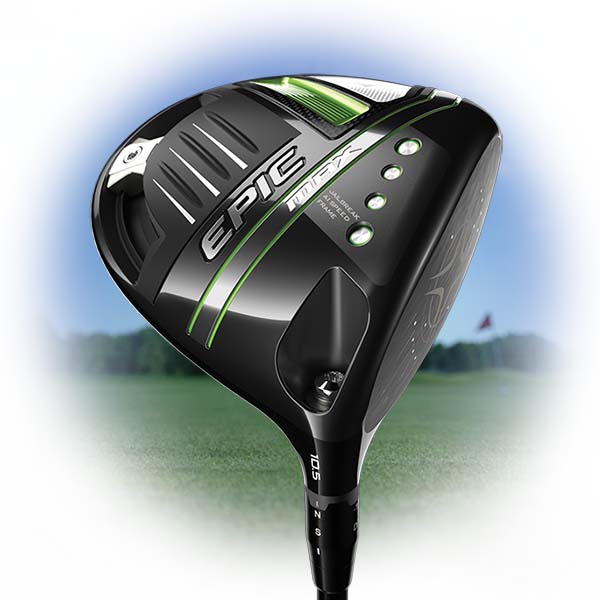
6. Callaway Epic Max
You’ll find more Epic Max drivers in the bags at a local course than any other clubs released the same year-and it’s for good reason. Performance persists.
If you’re new to golf, buying the most expensive and newest clubs is not the best decision. Instead, test the market and find something with a lower price tag with high-performance levels.
CALLAWAY EPIC MAX Specs
- Lofts: 9°, 10.5°, 12° (same for left-handed)
- Lie: 59°
- Head Size: 460cc
- Adjustable Hosel: Yes
- Adjustable Weights: Yes
- Stock Shafts:
- Project X Cypher 40g Graphite
- Project X HZRDUS Smoke IM10 50g Graphite
And if you’re new to the game, you probably don’t realize that just because the club is a few years old, the technology used isn’t all too different than the ones released now.
Drivers aren’t like a video game console or anything of the sort. They won’t be outdated until years after their release. The top model from a few years ago is still a top model.
Pros
- Weight slider at 16g is heavier than other Callaway models…which helps with more drastic fixes.
Cons
- Older model clubs can be difficult to replace stock parts, such as the weight or shaft.
Since the Callaway Epic Max was the premier club of Callaway, it is still better than any other brands more affordable models released today.
When the club was released, it was prasied for its ability to help the average golfer launch the ball high, reduce errant spin, and adjust ball flight using a sliding weight. All of this still holds true, and grabbing an unused or lightly used version will play like a new one hitting the shelves for the first time in 2023.
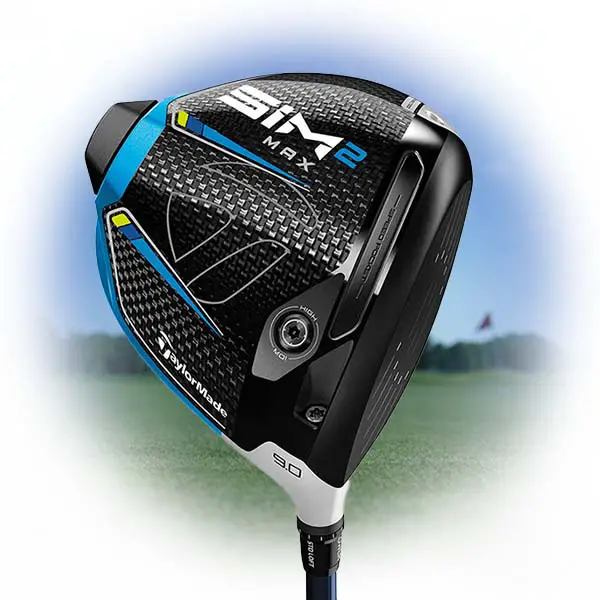
7. TaylorMade SIM 2 Max
People rotate clubs year over year, and for no good reason. Drivers last for more than a year and performance will remain steady even after a few nicks in the club appear. The SIM 2 MAX starts good and will stay good.
Want to know the best part of golf (outside of the noise a ball makes when it hits the bottom of the cup?) Golfers replace clubs in their bag way too frequently. This creates opportunity.
With a popular club like the TaylorMade SIM2 Max, within a year or two of their release, the used club market becomes saturated with near-perfect versions of the club used for a minimal number of rounds.
TAYLORMADE SIM2 MAX Specs
- Lofts: 9°, 10.5°, 12° (9° and 10.5° for left-handed)
- Lie: Adjustable 56°-60°
- Head Size: 460cc
- Adjustable Hosel: Yes
- Adjustable Weights: No
- Stock Shafts:
- Fujikura Ventus Blue 53g, 54g, 55g
- Kuro Kage Silver 64g, 67g, 69g
Want to save money and get one of the best clubs on the market? Explore the used club section. It’s filled with gems.
So, you’re an average golfer? You’re probably looking to add a few yards to your drives, (who isn’t?) The SIM2 Max utilizes an advanced weighting system that improves launch while increasing forgiveness. In other words, you increase carry distance while allowing yourself room to mishit the ball at impact.
Pros
- Highest level of forgiveness among all TaylorMade drivers.
- Forged Ring Construction is key to consistency, even as an average tee-ball player.
Cons
- A middle ground for launch angle. If you really struggle for optimal ball flight, you might elect for something designed to launch the ball higher.
Nobody will ever encourage you to make contact off-center, but it’s nice to know your club is looking out for you. I mean, across most new TaylorMade models, you’ll find the Twist Face technology that makes it possible. That’s the thing though, it’s in all new models, but this one comes with a reduced-price tag. Good deal, no?
Drivers For Amateur Golfers To Avoid
Callaway Paradym Triple Diamond
This club is made for pros and elite amateurs. Unless you’re a plus handicap, you aren’t going to hit the sweet spot consistently enough to take advantage of the benefits this club has to offer.
That being said, when (or if) you hit the sweet spot on this club, the ball flies farther than any other club we tried.
But if you miss the sweet spot, you’ll see a huge dropoff in distance. 99.9% of you out there will probably see lower scores if you start gaming this driver.
Titleist TSR3
I didn’t put the TSR3 here because it is a bad driver. In fact, the TSR line is among our highest-rated drivers this year. But it’s not one that I would recommend for slicers (despite the fact that I have seen it recommended for slicers on other sites).
To begin with, it’s designed with a smaller sweet spot for golfers that can make consistent impact on the center of the face. If you’re struggling with a slice, that probably doesn’t describe you.
While the dropoff isn’t as extreme as the Paradym Triple Diamond above, the negative effect of off-center hits is going to cause more of a distance loss with the TSR3 than some of the other options on this list.
Powerbilt TPS Supertech
I am only listing this club here because I have seen it recommended to slicers on other sites.
The biggest appeal of this club is the low cost. But unfortunately, this is a case of getting what you pay for.
If you’re here looking for a club that can improve your game, this isn’t it. You’ll be much better off keeping your current driver and saving up for a used copy of one of the clubs listed above. You can find some great deals on the used market and you’ll get far better results than with a budget club like this.
What The Average Golfer Should Look For In A Driver
Forgiveness
Forgiveness, in simple terms, means how well the club performs when you don’t hit the sweet spot. The most forgiving clubs will have a larger area of the club face that gives you maximum or close to maximum ball speed.
Most average golfers don’t hit the sweet spot of the driver’s face. So minimizing the negative effects of these mishits is the best way to improve the average golfer’s score.
If you can increase your average drive on mishits by 10-15 yards, you’ll be closer to the greens by a club or two and that means more greens in regulation and lower scores.
Adjustable Hosel
Another major factor in getting more distance and hitting more fairways is optimizing your ball flight.
You can do this by improving your swing, but being able to make adjustments to your club is the fastest way to optimize your ball flight.
This means that an adjustable club can unlock a lot more potential in your swing. So the best driver for the average golfer should be adjustable to let them optimize the club for their swing and also re-optimize it if there are any swing changes.
